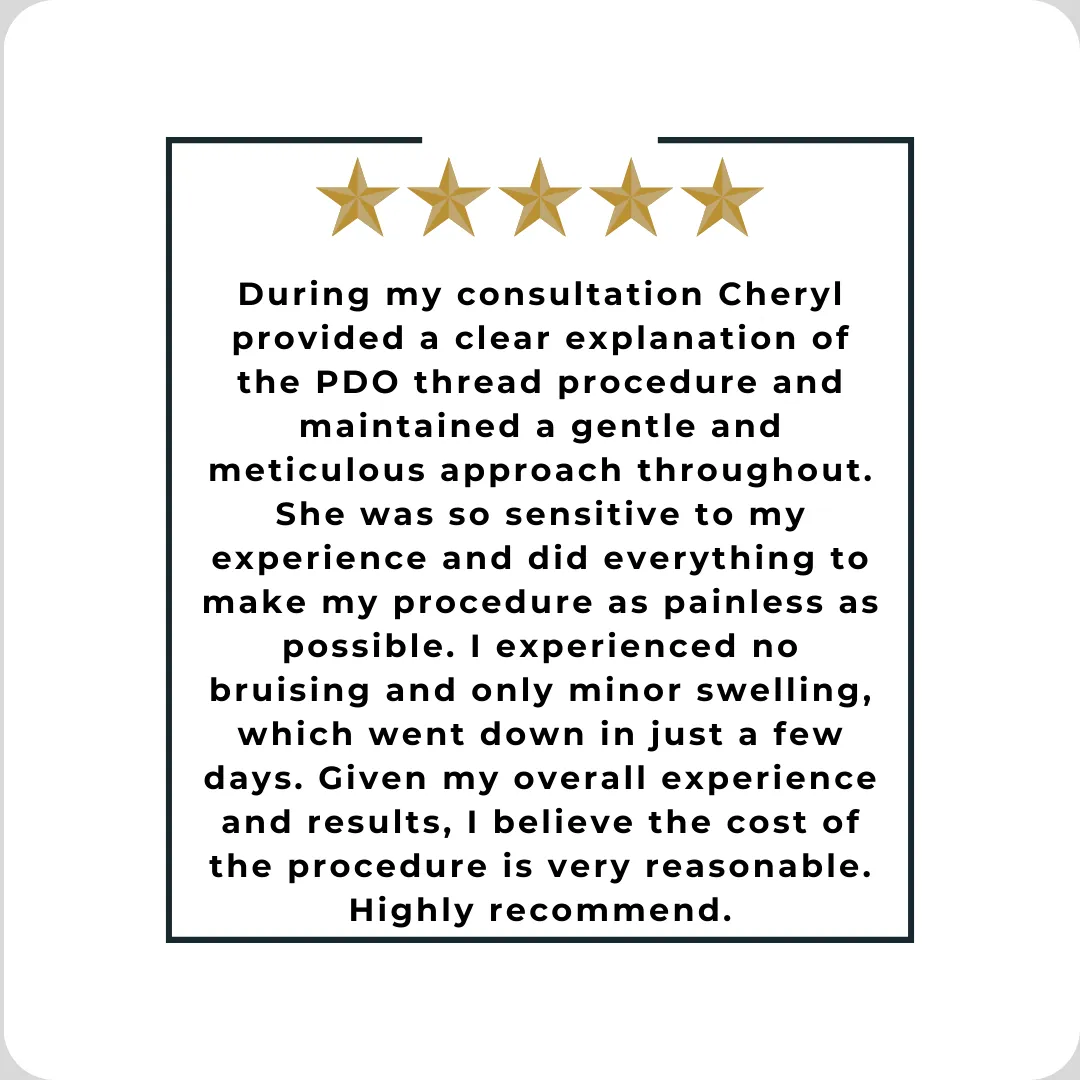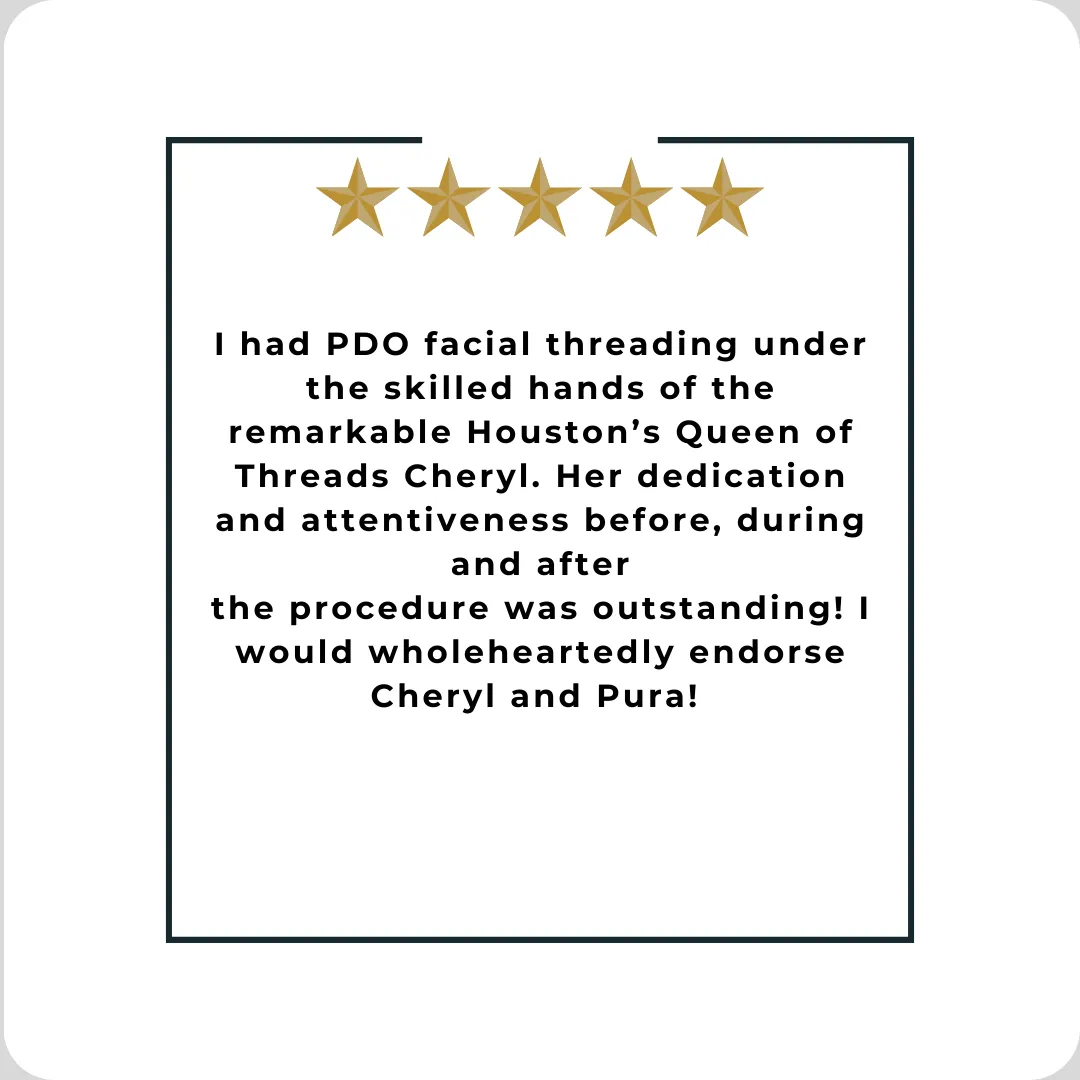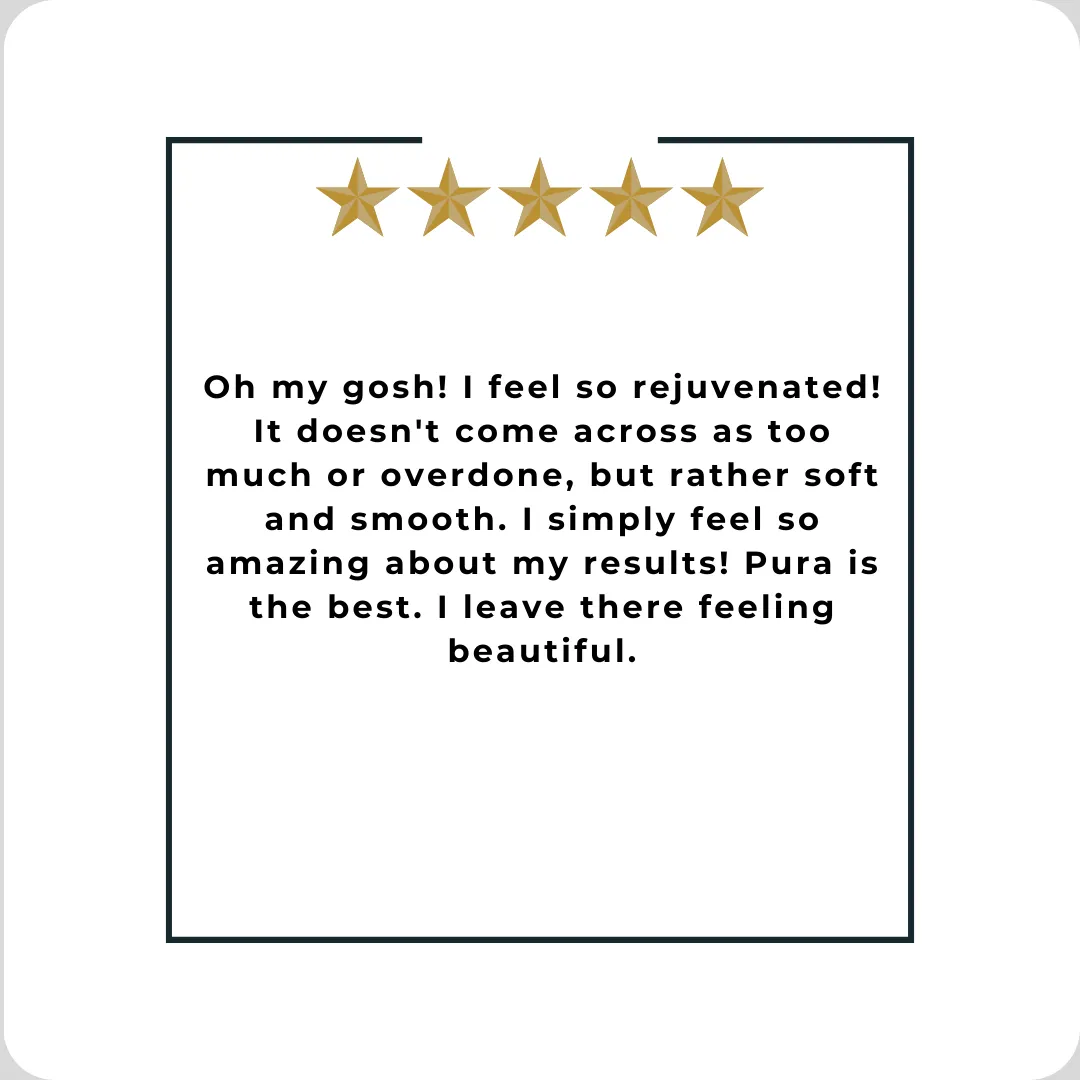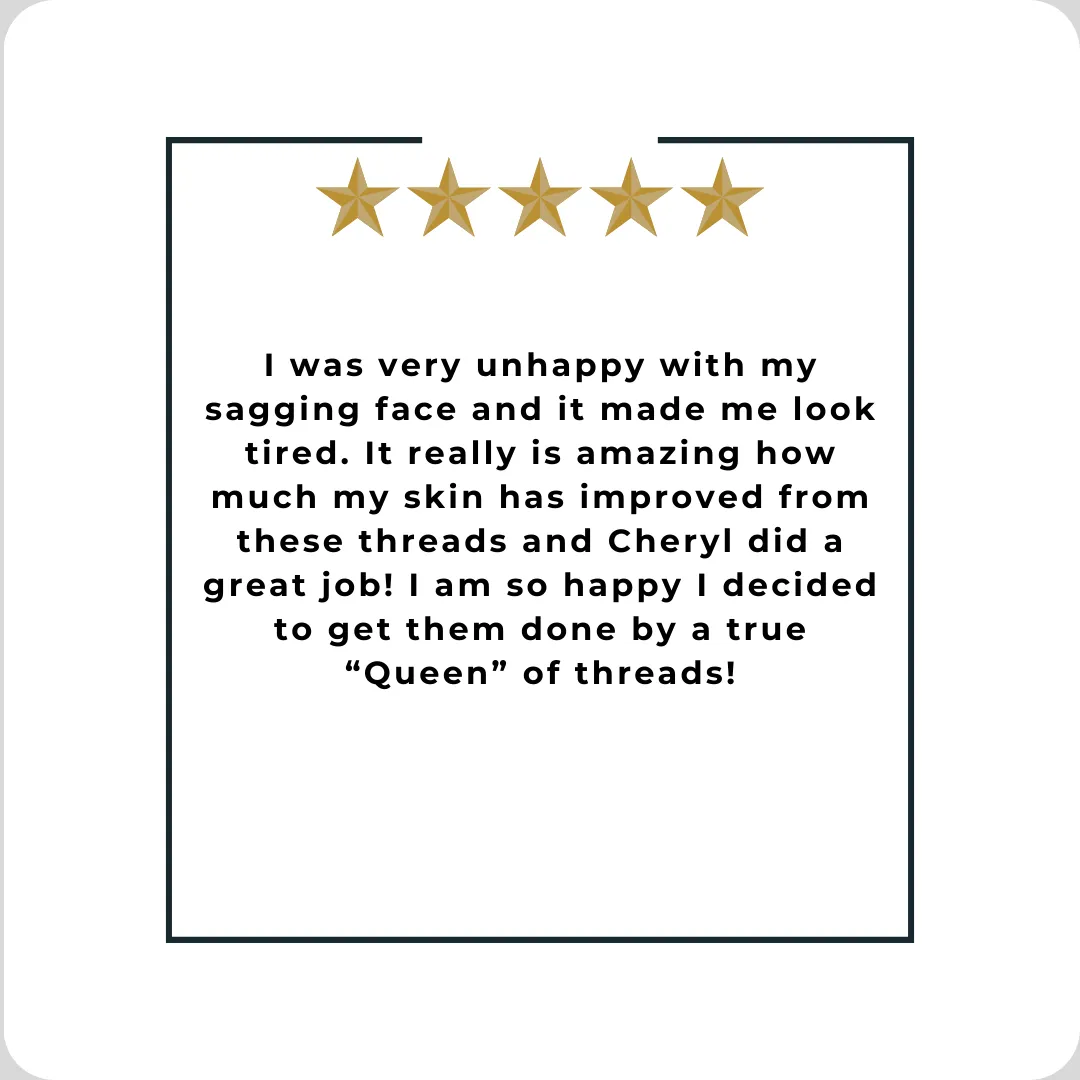PDO Thread Lifts
Restore a Natural, Youthful Appearance Without a Surgical Facelift
Just because you may be growing older, doesn’t mean you should settle for anything less than the vibrant, youthful radiance you deserve. With PDO Threads, you can achieve remarkable improvements without sacrificing comfort or enduring lengthy recovery periods. This non-surgical approach offers a convenient and effective way to address sagging skin, fine lines, and wrinkles, allowing you to reclaim your natural beauty.
Are Signs of Aging Affecting Your Confidence?
You're not alone. Many individuals like you are experiencing the emotional pain points associated with aging. Fine lines, sagging skin, and wrinkles can take a toll on how we perceive ourselves and how others perceive us.
Are you frustrated when the mirror doesn't capture the vibrant, youthful spirit you feel inside?
Do you find yourself questioning the effectiveness of creams and serums as the signs of aging become more apparent?
Are you tired of endless searching for solutions that actually work to bring back your youthful appearance and boost your confidence?
The Gentle Path to Rejuvenation with PDO Threads
Non-Surgical, Natural Enhancement
PDO Threads are an innovative non-surgical solution designed to enhance your natural beauty. They provide a subtle lift and improve skin tone without the need for invasive surgery.
Safe, Biocompatible Materials
Using medical-grade sutures made from biocompatible materials, PDO Threads gently lift and tighten sagging skin while being safe for your body.
Collagen-Stimulating Results
As the threads are placed beneath the skin, they stimulate your body’s natural collagen production, helping to restore firmness and elasticity for lasting rejuvenation.
Minimal Downtime, Long-Lasting Effects
Unlike traditional facelifts, PDO Threads require minimal downtime. The threads gradually dissolve over time, leaving behind refreshed, youthful skin with results that continue to improve.
PDO Threads before + after
A nonsurgical PDO thread lift might be a good option if you want to make a difference in your appearance without undergoing major surgery.
Your Journey with PDO Threads
What to Expect Before, During, and After the Procedure
BEFORE YOUR PROCEDURE
Meet with our staff for an in-office consultation. We'll do a thorough examination and talk with your about your goals, answer any questions you have, and help you feel comfortable. We'll also walk you through any financing options available for your procedure.
DURING YOUR PROCEDURE
PDO thread lift is a minimally invasive procedure. Our licensed, medical professionals will apply an anesthetic to the targeted area and make a small incision to insert the threads into the area. The treatment typically takes 30 to 50 minutes to complete. You are free to resume your normal schedule after the treatment.
AFTER YOUR PROCEDURE
Some bruising and swelling are to be expected for the first 24 to 48 hours. Avoid rubbing your face or applying pressure to the treated area. It’s best if you avoid intense exercise or exposing your face to extreme heat and pressure within two weeks after the session. More will be discussed in detail during your consultation.
Houston's Queen of Threads
Dr Cheryl Haseeb, DNP
Dr. Cheryl Haseeb, DNP, CCRN is known as Houston's Queen of Threads with over 200 thread lifts complete this year, she is highly skilled and certified in the art of PDO thread lifts. Known for her artistic eye and facial balancing, she offers consistent, superior results with each client. Through the integration of aesthetic technology and dedication to customer satisfaction, Dr. Cheryl strives to provide individualized, client centered procedures designed to each clients' goals.
It is a minimally invasive procedure that rejuvenates sagging skin and immediately results in a more natural-looking facelift. It is the most effective treatment option for the majority of people seeking an alternative to cosmetic surgery.


Take the Next Step
Reserve Your Consultation Today
Embark on your rejuvenation journey from the comfort of your own home with our convenient virtual consultations. Discover the benefits:
1. Flexibility: We offer both virtual or in-office consultations, saving you time and effort while still receiving expert guidance.
2. Personalized Attention: Receive individualized care as we understand your unique needs and develop a tailored treatment plan just for you.
3. Privacy: Discuss your concerns and goals in a comfortable and confidential environment.
PDO Threads vs. Facelifts
THREAD LIFT
- Treats sagging jowls, loose necklines, loss of volume in cheeks, fine lines and wrinkles
- Instant results with minimal swelling
- Non-surgical
- No scarring
- Lasts 12+ months
- Minimal risks - light swelling and possible bruising
- 24-48 hours downtime

FACELIFT
- Treats fine lines and wrinkles by removing lax skin and tightening underlying muscles
- 2 weeks discomfort, 4 weeks of setting time
- Surgical procedure requiring anesthetic, hospital stay and pain management
- Visible scarring and extensive post procedure care
- Lasts up to 10 years
- Considerable risks including possible infection, nerve damage, permanent change of look
- 14 days downtime
Discover the FAQs
and Get Informed!
The PDO (Polydioxanone) thread is a nonpermanent, surgical, barbed thread inserted under the skin to anchor and lift the skin. The procedure takes approximately 30-mintues with immediate results and no down time resulting in tightening of the skin and lifting fat pads back into youthful position. The PDO threads stimulate the production of collage leaving the skin with a refreshed, youthful appearance for up to 1.5 years.
It is effective on various facial regions, including the cheekbones, brow, nasolabial folds, vertical lines, jawline, and neck. Additionally, it may be used on the body, including the arms, thighs, and abdomen.
Benefits of PDO thread lift at Pura Medical Aesthetics include:
*FDA approved quick 30-minute procedure with no downtime
*Less invasive and less risk than surgery
*Reduces fine lines, deep wrinkles, texture, jowling and sagging skin
*Minimal to no swelling and bruising with no scarring
*Immediate results that last up to 1.5 years
*Produces collagen
PDO Threads can provide noticeable results that typically last around 12-18 months. The longevity can vary depending on individual factors, lifestyle, and the specific treatment area.
PDO Threads are suitable for individuals who have mild to moderate skin laxity and desire a non-surgical approach to improve their appearance. A thorough consultation will help determine if you are a suitable candidate for the treatment.
PDO Threads are generally safe and well-tolerated. However, as with any cosmetic procedure, there are some potential risks and side effects. These can include temporary swelling, bruising, or mild soreness. Our team will provide detailed post-procedure instructions to help minimize any discomfort.
Yes, PDO Threads can be combined with other treatments to enhance your results. Our skilled practitioners can recommend a customized treatment plan that may include a combination of procedures to address your specific goals.
Yes, PDO Threads provide an immediate lifting effect. You will notice a visible improvement right after the procedure. However, the full benefits will continue
You can see immediate results after PDO Threads, with an initial lift noticeable right after the treatment. As the threads stimulate collagen production, you will continue to see gradual improvements over the following weeks.
Yes, PDO Threads have been used for many years and have a proven safety record. Our experienced practitioners use high-quality materials and follow strict protocols to ensure your safety and well-being.
Discomfort during the PDO Threads procedure is minimal. Local anesthesia is administered to ensure your comfort throughout the treatment. You may experience some soreness or mild discomfort afterward, but it is temporary and manageable.
The recovery time after PDO Threads is typically short. You may experience some mild swelling or bruising that usually subsides within a few days. Most people are able to resume their normal activities shortly after the procedure.
While PDO Threads are primarily used for facial rejuvenation, they can also be utilized for certain body areas. Our skilled practitioners can determine if PDO Threads are suitable for your specific body concerns during a consultation.
PDO Threads can be used to address various areas of the face, including the cheeks, jowls, jawline, brows, and neck. Our experienced practitioners will assess your specific concerns and develop a treatment plan tailored to your needs.
The number of PDO Threads treatments needed varies depending on individual factors and desired outcomes. In some cases, a single treatment may be sufficient, while others may benefit from multiple sessions spaced several weeks apart.
Book Your PDO Thread Transformation Today
Unlock your skin’s potential with PDO Threads! Contact us today to schedule your personalized consultation and take the first step toward a lifted, youthful look.







